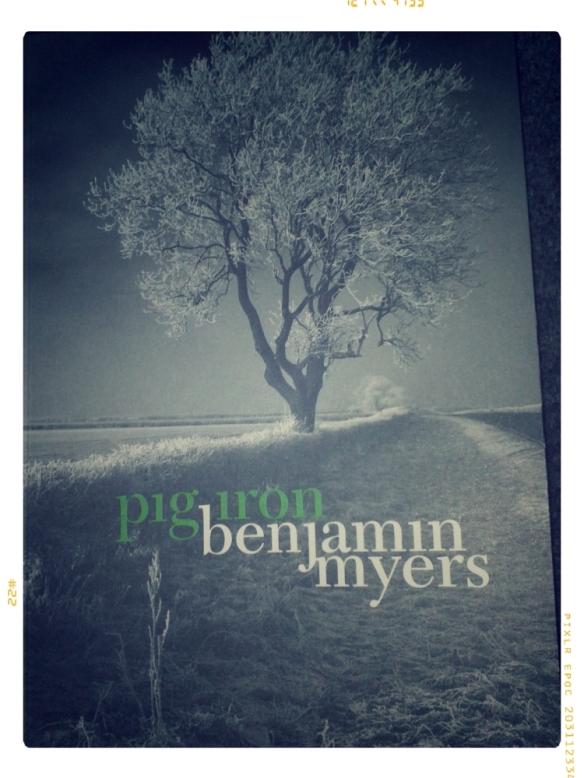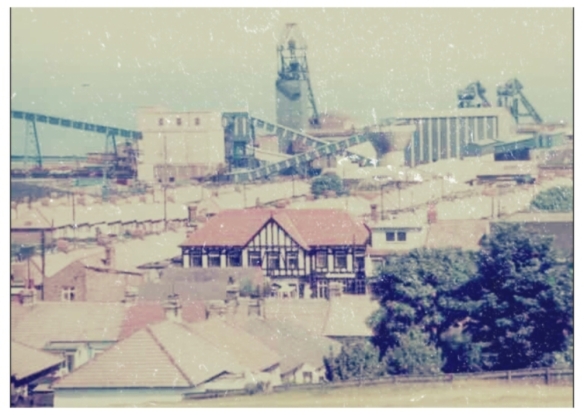It’s been a few days since I’ve written a post. Quite a lot has happened that’s meant that I’ve had to make a bit of a rethink for my short-term future. But on the good side, I’ve finally been able to review something I was trying to get hold of for quite some time. Pig Iron by journalist/novelist Ben Myers.
One of my favourite books of the last 2 years or so was Richard: A Novel by Ben Myers. A fictionalised account of the thoughts of Manic Street Preachers guitarist and lyricist Richey Edwards following his disappearance on the 1st February 1995. It’s a very well-researched and thought out book, with a split narrative between the 1st and 3rd person, acting as inner and outer monologues.
This method of narrative has been used before- especially in the works of my current favourite author, David Peace. The Red Riding series (about the attacks by the Yorkshire Ripper, and police corruption, spanning from 1974 to 1983), The Damned United (concerning football manager Brian Clough, his paranoia and his hatred of the players and ghosts of the past- both his and theirs. It was made into a film, much lighter in tone but still brilliant) and GB84– a tense, claustrophobic affair about the 1984 Miner’s Strike in South Yorkshire.
I’m really going to try and talk about the book without revealing much. I really recommend it. I’ve also never reviewed a book before, so please bear with me.
Anyway, I digress. Ben Myers’ new novel, Pig Iron, is set in County Durham, but no timeframe is given- it could really be set anywhere between the 1970s and some time last week. And rightly so- the protagonist, John-John Wisdom speaks fluently in strong North-Eastern English vernacular and dialect, often using terms very rarely heard, but still existent. Old stories are repeated, passed down, reinterpreted. The setting is almost timeless, but the past is an enemy. He is an ice-cream man, recently released from a Young Offenders Institute, trying to escape his past and his blood. He finds both are difficult to run from. He thoughts are tracked via flashbacks, building up a portrait of is family history, and the darkness within.
So why did I mention David Peace? A simple reason- I’ll often enjoy a book a lot more if I’m able to picture the location. In minute detail. The majority of Peace’s work is set in Yorkshire- Wakefield, Castleford, Hebden Bridge, Leeds, even Preston for a portion during 1980, the 3rd book of Red Riding. Similarly, Myers writes of places I know too well- the Durham overspill of Sacriston, Wheatley Hill and Wingate, the ex-pit villages on the coast contrast with the actual City itself.
The story? It begins with the ideal of attempting to escape the past, before becoming a piece of revenge, with enough leeway to allow a brief romance into the life of John-John, which acts as a spark towards the final third of the novel. Torn between his heritage and grasping modernity, John-John is trapped between the ‘green cathedral’ (a phrase used frequently throughout) and the dank, grey concrete suburbs. His travelling past is brought to a stop by outside influences he cannot control. In short, John-John is trapped.
The flashback sequences gradually add colour between the lines of John-John’s past, explaining his actions and thoughts in a level far above his own understanding. That isn’t saying that he is unintelligent- quite the opposite, he is wise beyond his 20 years- but his life has included a lot of secrets kept from him.
The detail that goes into the movements of John-John’s actions adds a level of tense and suspense, particularly as he begins to plan his revenge:
“…And then I’ve crossed the A19 and am passing round the outskirts of Peterlee where I see a milk cart clinking in the dark blue light; the first human signs of a new day approaching.
The sea is close enough to smell the briny seaweed and the salt-sharpness of air that always reminds us of childhood and then suddenly it’s there before use like a slice of sky that’s slipped below the line of the horizon and turned darker; a shadow of the sky in liquid form.
The North Sea.
I pass through Horden and it’s in a sleepy stupor. There’s nowt here but houses and offies and a power station. It’s the last outpost of the land; a place to fester and rot and die. They can’t even be arsed to name the streets here. There’s just Sixth Street, Seventh Street, Eighth Street and so on. It’s living reduced to numbers.
Some bloke who looks like he’s been on the beer all night tries to flag us down but I fly past because I’m stopping for nee-one today. Then Thorpe Road leads to the Sunderland Road which leads to the Coast Road. I hit it going southbound, the sea to my left and nowt but a strip of cliff-top allotments and the water below between me and Denmark.”
Nearly every detail adds paranoia onto the thoughts of the protagonist- his past is stalking him, and will catch him eventually. And as a reader, you end up dragged forward, towards the ultimate fate of John-John, but also to achieve a sense of closure with his past. Which makes the book all the more compelling.
Highly recommended.
(Dial Tone)
